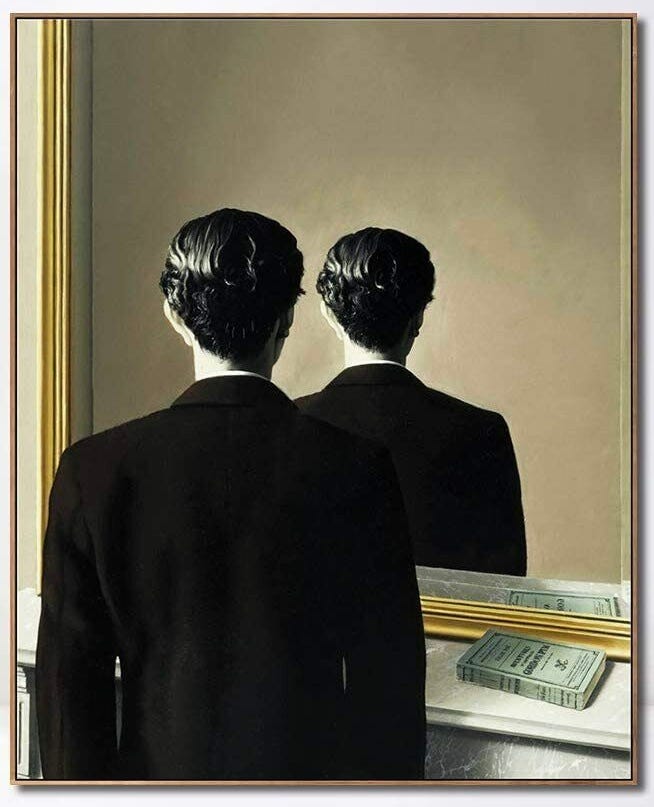Art: Framing as an Element of
Form
Reservations Recommended, Chapter 3:
“Why the name?” asks Harold. “Picture Frame?”
“Ah!” says Belinda. “Well, . . .”
Hubertus Gassner, “The Constructivists: Modernism on the Way to Modernization,” in The Great Utopia: The Russian and Soviet Avant-Garde, 1915–1932:
Self-consciousness, in the sense of an ego that has become aware of itself, also knows the division into a producing subject and a produced object which in itself is a subject, i.e., the conscious ego. The self, as prior to the conscious ego, can only recognize itself by reflecting itself in the ego and thereby delimiting itself in the way a frame delimits a mirror. Only in the delimited form of a conscious and therefor defined object (the conscious ego) can the self experience itself as an unlimited and determining subject. Only by observing itself in the creation of itself can an individual’s self-consciousness recognize, and ultimately produce, itself.
Manfredo Tafuri, The Sphere and the Labyrinth: Avant-Gardes and Architecture from Piranesi to the 1970s:
Simmel, on the basis of a partial reading of Nietzsche, recognizes this in his Metaphysics of Death: “The secret of form lies in the fact that it is a boundary; it is the thing itself and at the same time the cessation of the thing, the circumscribed territory in which the Being and the No-longer-being of the thing are one and the same.” If form is a boundary, there then arises the problem of the plurality of boundaries—and the calling them into question.
I’m sorry to say that it took an obituary in The New York Times to introduce me to the music of Emahoy Tsegué-Maryam Guèbrou:
Emahoy Tsegué-Maryam Guèbrou, Nun With a Musical Gift, Dies at 99
Ethiopian-born, she was on track to be a concert pianist before choosing a monastic life. But her later piano recordings gained fans. Norah Jones called them “beautiful.”
Have you missed an episode or two or several?
You can begin reading at the beginning or you can catch up by visiting the archive or consulting the index to the Topical Guide.
You can listen to the episodes on the Personal History podcast. Begin at the beginning or scroll through the episodes to find what you’ve missed.
You can listen to “My Mother Takes a Tumble” and “Do Clams Bite?” complete and uninterrupted as audiobooks through YouTube.
You can ensure that you never miss a future issue by getting a free subscription. (You can help support the work by choosing a paid subscription instead.)
At Apple Books you can download free eBooks of Little Follies and Herb ’n’ Lorna.
You’ll find overviews of the entire work in An Introduction to The Personal History, Adventures, Experiences & Observations of Peter Leroy (a pdf document) and at Encyclopedia.com.




